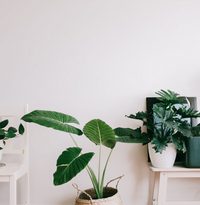Bringing Your Minimalist Home Decor to Life
What are the main components of minimalist home decor style? When designing a minimalist home, remember these four main components: Furniture must always be functional. Surfaces should always be flat and sleek. And most importantly, accessories should make the homeowner’s life easier not more complicated.
A minimalist home decor style usually focuses on functionality. With minimal furnishings, walls are often bare. This allows for open floor plans, which is very helpful when trying to create a minimalist space. Because the walls are bare, minimalist furniture is at a minimalist level.
Functional furnishing is extremely important when designing a minimalist home decor. As mentioned above, keep furniture’s primary function in mind at all times. For example, if you are planning on using the bedroom for guests then you don’t want to fill it with a bunch of decorative pieces. Keep in mind that a minimalist approach to furnishing can cut expenses by 50% or more! Here are some key elements to keep in mind when shopping for furniture:
You might want to consider a minimalist approach when it comes to your home’s lighting as well. The days of the big chandelier have gone away but there are still ways to keep clutter and light from being a dead tie in your minimalist home decor. One of the best ways to achieve a clutter free minimalist space is to hang mirrors that reflect light instead of bringing attention to the furniture or floor.
Another key element to remember when designing minimalist home decor is a solid, neutral colour palette. By keeping everything in neutral, earth tones, you ensure that the room has a greater depth of colour, allowing it to pull together smaller items of interest without detracting from the main theme or colour scheme of the room. The colours you choose can even be influenced by the plants or trees in your garden, allowing your space to become an organic whole.
One of the keys to creating a clutter-free minimalist home decor space is to have everything broken down into simple, basic pieces. Having everything in its own little nook or cranny can help keep the size of the room down, and can also help with colour coordination. Keep in mind that having too much furniture in a small space can be overwhelming, so try to keep the pieces you love the most in their own little nooks and crannies. When you’re done with a piece, it should look like it fits naturally within the space, rather than sticking out like a sore thumb.
You may want to consider a few ways to save money when decorating your minimalist home decor space. Instead of buying fancy looking, bulky pieces, choose pieces that are less expensive but just as sturdy. For instance, don’t buy a beautiful table to set your drinks on if you could get by without one. Remember to think about how you want your minimalist interior to look, not only in its physical layout but also in its color palette. Some finishes (such as light sand or cream) look better in spaces that are painted a lighter color, while darker hues look better in rooms that are shaded or partially obscured. Choosing complementary colors and finishes can help your room blend together seamlessly and make for a more aesthetically pleasing space.
As with any type of decor, minimalist home decor is all about balance. The last thing you want is for your furniture to dwarf the walls or other items in your space, making it impossible to move around comfortably. If you are decorating an empty space, then you might even consider purchasing a small bed, futon, pillow case, or decorative accent rug to turn your empty space into something that works with your minimalist furniture. A good investment will go a long way in bringing your minimalist style to life.



